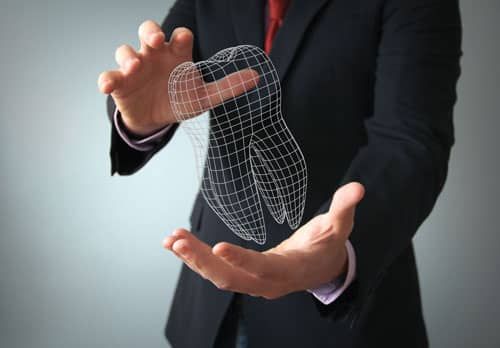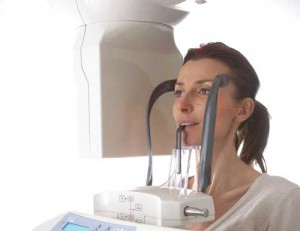Technology for the orthodontic practice is evolving at an astonishing rate. Thanks to new intraoral scanners, 3D imaging systems, and orthodontic imaging software, orthodontists are able to digitize all of their clinical records and improve productivity as well as expedite processes that were, at one point, more time-consuming.
While the technology is out there, not all systems will bring value to your practice. There are three questions that should be asked when assessing technology to help you decide which systems will deliver ROI and which will just collect dust:
1) Will it improve my clinical outcome?
2) Will it help me attract more patients?
3) Will it provide a positive return on the investment?
Let’s consider these questions when evaluating some of the most recent orthodontic technologies.
Intraoral Scanners
Intraoral digital impression systems are the hottest technology for today’s practice. With an intraoral scanner, you can avoid the mess and patient discomfort associated with traditional impressions, as well as eliminate the need to store plaster models. When evaluating an intraoral scanner for your practice, consider the following:
- Will a digital impression system help me provide a better clinical result? Some digital impression systems do provide a more accurate impression than typical methods. High-end scanners are as accurate as PVC and eliminate the potential distortions caused by improper technique. So it is true that a scanner can help you acquire more accurate impressions, but it is not likely to improve the clinical outcome.
- Will a digital impression system help me attract more new patients and increase my rate of case acceptance? Yes. Patients do not like traditional impressions. Assuming you are using a scanner that is comfortable for the patient and does not require “nasty powder,” the patient will have a better experience from a digital impression system—even if it takes slightly more time than traditional methods.
A digital impression is also very new and exciting to patients. The fact that they can digitally see the impression created as you scan their mouth will set you apart from other experiences. Fair or not, this will result in the patient assuming you are more up to date in your clinical abilities as well.
- Will this technology provide a positive return on the investment? Yes. Exact numbers, of course, vary; but, at $25+ per arch in PVS materials alone, many offices will spend over $750 per month on impressions. This does not include the additional staff time to pour up models, additional appointments, remakes, etc, that digital scanners eliminate. Typical monthly cost of an intraoral scanner financed over 5 years can be less than $450/month, resulting in an immediate financial benefit each month.
 Cone Beam Computed Tomography (CBCT) Systems
Cone Beam Computed Tomography (CBCT) Systems
CBCT/3D is another hot topic for technology investment. Ask yourself the following when assessing 3D systems:
- Will CBCT technology help me provide a better clinical result? Yes. Three-dimensional images may not be indicated for every patient, but there is sufficient evidence that in many cases, 3D technology will help you make better clinical decisions. It is possible to gain access to CBCT images when needed clinically without purchasing your own system by working with imaging centers or other facilities that have the technology.
- Will 3D/CBCT help me attract more patients and increase my rate of case acceptance? Yes. Teenagers love to see their own skull instantly acquired on the computer. When patients and parents see your ability to view the teeth from every angle, you are immediately an expert in their eyes. This technology has a drastic impact on patient perception of an office and the doctor’s clinical abilities.
- Will this technology provide a positive return on investment? In most cases, yes. The ROI will depend on the practice philosophy. Many practices prefer to work primarily from traditional pan/ceph and only take a 3D scan when certain findings indicate. In these cases, the ROI is lower, but usually still positive.
Many offices include 3D images in their exam, but some charge as much as $200 per scan. Typical cost of a 3D system may be $1,500/month. At this rate, just eight 3D scans per month will create a positive return on the investment (before potential tax and other benefits are considered). However, the real financial return of 3D technology comes from increased case acceptance.
If you only generate one additional start per month (a very realistic expectation), you could see a 400% return on your investment each month (assuming production value of the start at $6,000 and monthly cost of the system at $1,500). I believe the most important consideration when evaluating a 3D/CBCT system is selecting a system that can address ALL of your imaging needs in one system.
Orthodontic Software
Practice management and imaging software do not attract as much attention when considering technology investments. However, they can have a significant impact on your practice. Keep the following questions in mind when looking for new orthodontic software:
- Will cutting-edge case presentation software (such as the “Sarver Module,” available with CS OrthoTrac) help me provide a better clinical result? In many cases, yes. For example, the Sarver Module digitally applies “standards” to quickly evaluate Macro, Mini, and Micro esthetic proportions to optimize the clinical goals, and as a result the clinical outcome of an orthodontic case.
- Will cutting-edge software help me attract more new patients and increase my rate of case acceptance? Again, the answer is yes in many cases. Using software like the Sarver Module, orthodontists are better able to educate patients and make them more aware of the available treatment options. Patients are looking for more than just “straight teeth” and want to know they are getting a full smile design. Your ability to document and present orthodontic concepts to your patients and referring doctors (while providing excellent case documentation) will increase the number of patients who start treatment at your office.
- Will cutting-edge software provide a positive return on investment? It depends on your current system. If you are using a program that does not aggressively track prospective patients, provide simple communication with your prospective and existing patients, and streamline your staff’s follow-up to convert and maintain patients, then you will benefit from a new software application, such as CS OrthoTrac.
When applied correctly, technology can certainly deliver a number of benefits to your patients, your staff, and your office’s bottom line. Asking yourself the questions posed here will help you identify the technology that will help your practice be more successful and stay away from the ones that will not be worth the investment. OP
Matt Hendrickson has spent more than 20 years in the industry. He is currently US orthodontic director for Carestream Dental. Prior to joining Carestream Dental, Hendrickson founded and served as president of Integrated Dental Solutions, as well as held a variety of roles within dental practices.











